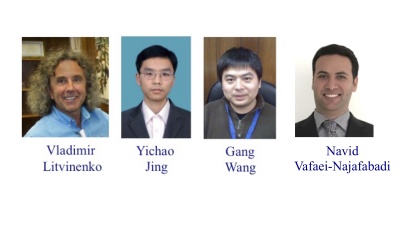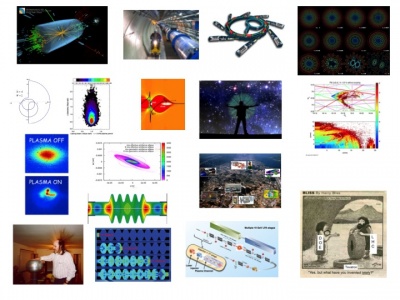Difference between revisions of "PHY554 Fall 2021"
From CASE
(→Teaches, Students, Topics) |
|||
| Line 5: | Line 5: | ||
[[Image:Accelerators.jpg|400px|Image: 600 pixels|right]] | [[Image:Accelerators.jpg|400px|Image: 600 pixels|right]] | ||
| + | |||
| + | |||
| + | == Course Overview == | ||
| + | The graduate/senior undergraduate level course focuses on the fundamental physics and key concepts of modern particle accelerators. The course is intended for graduate students and advanced undergraduate students who want to familiarize themselves with principles of accelerating charged particles and gain knowledge about contemporary particle accelerators and their applications. | ||
| + | |||
| + | It will cover the following contents: | ||
| + | |||
| + | * History of accelerators and basic principles (eg. centre of mass energy, luminosity, accelerating gradient, etc) | ||
| + | |||
| + | * Radio Frequency cavities, linacs, SRF accelerators; | ||
| + | |||
| + | |||
| + | * Magnets, Transverse motion, Strong focusing, simple lattices; Non-linearities and resonances; | ||
| + | |||
| + | |||
| + | * Circulating beams, Longitutdinal dynamics, Synchrotron radiation; principles of beam cooling, | ||
| + | |||
| + | |||
| + | * Applications of accelerators: light sources, medical uses | ||
| + | |||
| + | Students will be evaluated based on the following performances: '''final presentation on specific research paper (40%), homework assignments (40%) and class participation (20%).''' | ||
Revision as of 17:53, 28 July 2021
Teaches, Students, Topics
Course Overview
The graduate/senior undergraduate level course focuses on the fundamental physics and key concepts of modern particle accelerators. The course is intended for graduate students and advanced undergraduate students who want to familiarize themselves with principles of accelerating charged particles and gain knowledge about contemporary particle accelerators and their applications.
It will cover the following contents:
- History of accelerators and basic principles (eg. centre of mass energy, luminosity, accelerating gradient, etc)
- Radio Frequency cavities, linacs, SRF accelerators;
- Magnets, Transverse motion, Strong focusing, simple lattices; Non-linearities and resonances;
- Circulating beams, Longitutdinal dynamics, Synchrotron radiation; principles of beam cooling,
- Applications of accelerators: light sources, medical uses
Students will be evaluated based on the following performances: final presentation on specific research paper (40%), homework assignments (40%) and class participation (20%).

